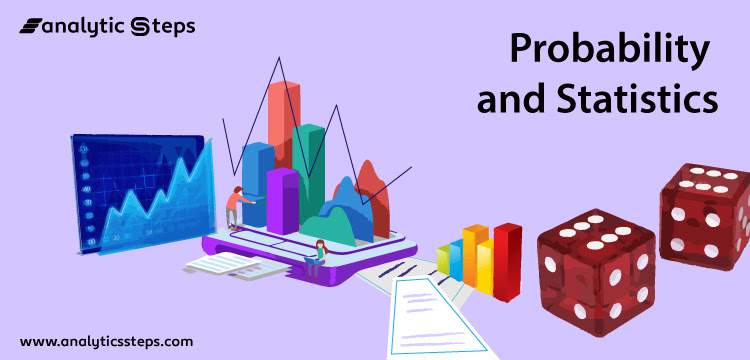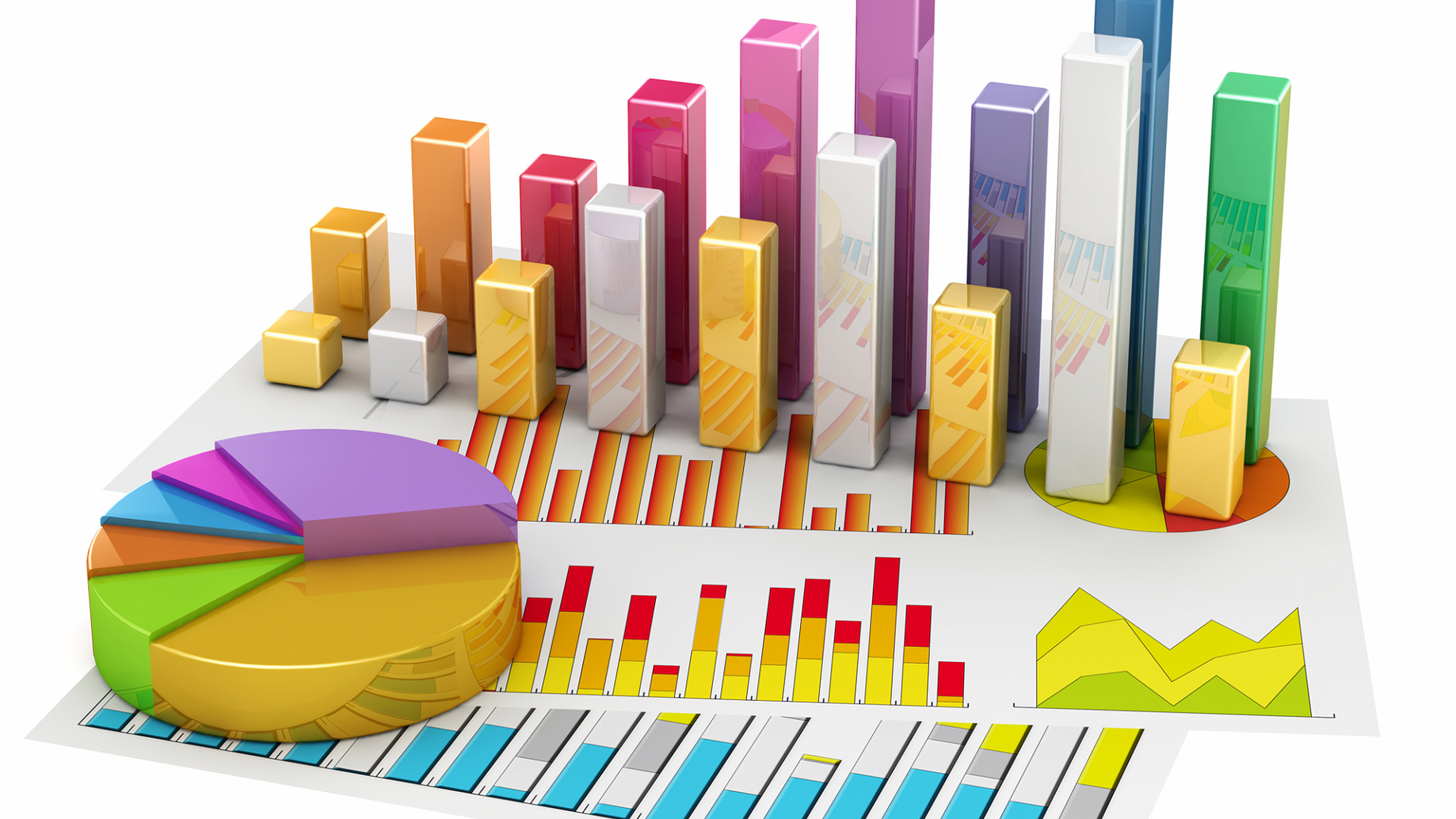Last Updated on July 29, 2023
Probability and Statistics for Data Science is a comprehensive online course that fuses probability, statistics and machine learning together to give students a solid understanding of these core concepts.
Right here on College learners, you are privy to a litany of relevant information on probability and statistics for data science udemy, probability and statistics for data science machine learning, and so much more. Take out time to visit our catalog for more information on similar topics.

probability and statistics for data science
Probability and Statistics for Data Science
Probability and Statistics form the basis of Data Science. The probability theory is very much helpful for making the prediction. Estimates and predictions form an important part of Data science. With the help of statistical methods, we make estimates for the further analysis. Thus, statistical methods are largely dependent on the theory of probability. And all of probability and statistics is dependent on Data.
Data
Data is the collected information(observations) we have about something or facts and statistics collected together for reference or analysis.
Data — a collection of facts (numbers, words, measurements, observations, etc) that has been translated into a form that computers can process
Why does Data Matter?
- Helps in understanding more about the data by identifying relationships that may exist between 2 variables.
- Helps in predicting the future or forecast based on the previous trend of data.
- Helps in determining patterns that may exist between data.
- Helps in detecting fraud by uncovering anomalies in the data.
Data matters a lot nowadays as we can infer important information from it. Now let’s delve into how data is categorized. Data can be of 2 types categorical and numerical data. For Example in a bank, we have regions, occupation class, gender which follow categorical data as the data is within a fixed certain value and balance, credit score, age, tenure months follow numerical continuous distribution as data can follow an unlimited range of values.
Descriptive Statistics
A descriptive statistic is a summary statistic that quantitatively describes or summarizes features of a collection of information. It helps us in knowing our data better. It is used to describe the characteristics of data.
Measurement level of Data
The qualitative and quantitative data is very much similar to the above categorical and numerical data.
Nominal: Data at this level is categorized using names, labels or qualities. eg: Brand Name, ZipCode, Gender.
Ordinal: Data at this level can be arranged in order or ranked and can be compared. eg: Grades, Star Reviews, Position in Race, Date
Interval: Data at this level can be ordered as it is in a range of values and meaningful differences between the data points can be calculated. eg: Temperature in Celsius, Year of Birth
Ratio: Data at this level is similar to interval level with added property of an inherent zero. Mathematical calculations can be performed on these data points. eg: Height, Age, Weight
Population or Sample Data
Before performing any analysis of data, we should determine if the data we’re dealing with is population or sample.
Population: Collection of all items (N) and it includes each and every unit of our study. It is hard to define and the measure of characteristic such as mean, mode is called parameter.
Sample: Subset of the population (n) and it includes only a handful units of the population. It is selected at random and the measure of the characteristic is called as statistics.
For Example, say you want to know the mean income of the subscribers to a movie subscription service(parameter). We draw a random sample of 1000 subscribers and determine that their mean income(x̄) is $34,500 (statistic). We conclude that the population mean income (μ) is likely to be close to $34,500 as well.
Now before looking at distributions of data. Let’s take a look at measures of data.
Measures of Central Tendency
The measure of central tendency is a single value that attempts to describe a set of data by identifying the central position within that set of data. As such, measures of central tendency are sometimes called measures of central location. They are also classed as summary statistics.
Mean: The mean is equal to the sum of all the values in the data set divided by the number of values in the data set i.e the calculated average. It susceptible to outliers when unusual values are added it gets skewed i.e deviates from the typical central value.
Median: The median is the middle value for a dataset that has been arranged in order of magnitude. Median is a better alternative to mean as it is less affected by outliers and skewness of the data. The median value is much closer than the typical central value.
Mode: The mode is the most commonly occurring value in the dataset. The mode can, therefore sometimes consider the mode as being the most popular option.
For Example, In a dataset containing {13,35,54,54,55,56,57,67,85,89,96} values. Mean is 60.09. Median is 56. Mode is 54.
Measures of Asymmetry
Skewness: Skewness is the asymmetry in a statistical distribution, in which the curve appears distorted or skewed towards to the left or to the right. Skewness indicates whether the data is concentrated on one side.
Positive Skewness: Positive Skewness is when the mean>median>mode. The outliers are skewed to the right i.e the tail is skewed to the right.
Negative Skewness: Negative Skewness is when the mean<median<mode. The outliers are skewed to the left i.e the tail is skewed to the left.
Skewness is important as it tells us about where the data is distributed.
For eg: Global Income Distribution in 2003 is highly right-skewed.We can see the mean $3,451 in 2003(green) is greater than the median $1,090. It suggests that the global income is not evenly distributed. Most individuals incomes are less than $2,000 and less number of people with income above $14,000, so the skewness. But it seems in 2035 according to the forecast income inequality will decrease over time.
Measures of Variability(Dispersion)
The measure of central tendency gives a single value that represents the whole value; however, the central tendency cannot describe the observation fully. The measure of dispersion helps us to study the variability of the items i.e the spread of data.
Remember: Population Data has N data points and Sample Data has (n-1) data points. (n-1) is called Bessel’s Correction and it is used to reduce bias.
Range: The difference between the largest and the smallest value of a data, is termed as the range of the distribution. Range does not consider all the values of a series, i.e. it takes only the extreme items and middle items are not considered significant. eg: For {13,33,45,67,70} the range is 57 i.e(70–13).
Variance: Variance measures how far is the sum of squared distances from each point to the mean i.e the dispersion around the mean.
Variance is the average of all squared deviations.
Note: The units of values and variance is not equal so we use another variability measure.
Standard Deviation: AsVariance suffers from unit difference so standard deviation is used. The square root of the variance is the standard deviation. It tells about the concentration of the data around the mean of the data set.
For eg: {3,5,6,9,10} are the values in a dataset.
Coefficient of Variation(CV): It is also called as the relative standard deviation. It is the ratio of standard deviation to the mean of the dataset.
Standard deviation is the variability of a single dataset. Whereas the coefficient of variance can be used for comparing 2 datasets.
From the above example, we can see that the CV is the same. Both methods are precise. So it is perfect for comparisons.
Measures of Quartiles
Quartiles are better at understanding as every data point considered.
Measures of Relationship
Measures of relationship are used to find the comparison between 2 variables.
Covariance: Covariance is a measure of the relationship between the variability of 2 variables i.e It measures the degree of change in the variables, when one variable changes, will there be the same/a similar change in the other variable.

probability and statistics for data science udemy
Requirements
- Absolutely no experience is required. We will start from the basics and gradually build up your knowledge.
- A willingness to learn and practice
Description
Probability is probably the most fundamental skill you need to acquire if you want to be successful in the world of business. What most people don’t realize is that having a probabilistic mindset is much more important than knowing “absolute truths”.
You are already here, so actually you know that.
And it doesn’t matter if it is pure probability, statistics, business intelligence, finance or data science where you want to apply your probability knowledge…
Probability for Statistics and Data Science has your back!
This is the place where you’ll take your career to the next level – that of probability, conditional probability, Bayesian probability, and probability distributions.
You may be wondering: “Hey, but what makes this course better than all the rest?”
Probability for Statistics and Data Science has been carefully crafted to reflect the most in-demand skills that will enable you to understand and compute complicated probabilistic concepts. This course is:
- Easy to understand
- Comprehensive
- Practical
- To the point
- Beautifully animated (with amazing video quality)
Packed with plenty of exercises and resources
That’s all great, but what will you actually learn? Probability. And nothing less.
To be more specific, we focus on the business implementation of probability concepts. This translates into a comprehensive course consisting of:
- An introductory part that will acquaint you with the most basic concepts in the field of probability: event, sample space, complement, expected value, variance, probability distribution function
- We gradually build on your knowledge with the first widely applicable formulas:
- Combinatorics or the realm of permutations, variations, and combinations. That’s the place where you’ll learn the laws that govern “everyday probability”
- Once you’ve got a solid background, you’ll be ready for some deeper probability theory – Bayesian probability.
- Have you seen this expression: P(A|B) = P(B|A)P(A)/P(B) ? That’s the Bayes’ theorem – the most fundamental building block of Bayesian inference. It seems complicated but it will take you less than 1 hour to understand not only how to read it, but also how to use it and prove it
- To get there you’ll learn about unions, intersections, mutually exclusive sets, overlapping sets, conditional probability, the addition rule, and the multiplication rule
Most of these topics can be found online in one form or another. But we are not bothered by that because we are certain of the outstanding quality of teaching that we provide.
What we are really proud of, though, is what comes next in the course. Distributions.
Distributions are something like the “heart” of probability applied in data science. You may have heard of many of them, but this is the only place where you’ll find detailed information about many of the most common distributions.
- Discrete: Uniform distribution, Bernoulli distribution, Binomial distribution (that’s where you’ll see a lot of the combinatorics from the previous parts), Poisson
- Continuous: Normal distribution, Standard normal distribution, Student’s T, Chi-Squared, Exponential, Logistic
Not only do we have a dedicated video for each one of them, how to determine them, where they are applied, but also how to apply their formulas.
Finally, we’ll have a short discussion on 3 of the most common places where you can stumble upon probability:
- Finance
- Statistics
- Data Science
If that’s not enough, keep in mind that we’ve got real-life cases after each of our sections. We know that nobody wants to learn dry theory without seeing it applied to real business situations so that’s in store, too!
We think that this will be enough to convince you curriculum-wise. But we also know that you really care about WHO is teaching you, too.
Teaching is our passion
We worked hard for over four months to create the best possible Probability course that would deliver the most value to you. We want you to succeed, which is why the course aims to be as engaging as possible. High-quality animations, superb course materials, quiz questions, handouts and course notes, are just some of the perks you will get. What else?
Exceptional Q&A support. Yes. That’s our favorite part – interacting with you on the various topics you learn about (and you are going to love it, too!)
What makes this course different from the rest of the Probability courses out there?
- High-quality production – HD video and animations (This isn’t a collection of boring lectures!)
- Knowledgeable instructor (an adept mathematician who has competed at an international level) who will bring you not only his probability knowledge but the complicated interconnections between his areas of expertise – finance and data science
- Comprehensive – we will cover all major probability topics and skills you need to level up your career
- Extensive Case Studies – helping you reinforce everything you’ve learned
- Exceptional support – we said that, but let’s say it again – if you don’t understand a concept or you simply want to drop us a line, you’ll receive an answer within 1 business day
- Succinct – the biggest investment you’ll make is your own time. And we will not waste it. All our teaching is straight to the pointStill not convinced?
Here’s why you need these skills?
- Salary/Income – most businesses are starting to realize the advantages of implementing data-driven decisions. And those are all stepping on probability. A probabilistic mindset is definitely one of the non-automatable skills that managers of the next decade will be expected to have
- Promotions and secure future – If you understand probability well, you will be able to back up your business and positions in much more convincing way, draining from quantitative evidence; needless to say, that’s the path to career growth
- New horizons – probability is a pathway to many positions in any industry. While it is rarely a full-time position, it is crucial for most business jobs nowadays. And it’s not a boring aspect!
Please bear in mind that the course comes with Udemy’s 30-day money-back guarantee. And why not give such a guarantee? We are certain this course will provide a ton of value for you.
Let’s start learning together now!
Who this course is for:
- People who want a career in Data Science
- People interested in a Business Intelligence career
- Business analysts
- Business executives
- Individuals who are passionate about numbers and quant analysis
- Anyone who wants to learn the subtleties of Probability and how it is used in the business world
- People who want to start learning probability
- People who want to learn the fundamentals of probability
- People who wish to extract insights from summarized statistics to understand academic papers

probability and statistics for data science machine learning
Requirements
- Passion to Learn Statistics , Rest we will take care of it
Description
This course is designed to get an in-depth knowledge of Statistics and Probability for Data Science and Machine Learning point of view. Here we are talking about each and every concept of Descriptive and Inferential statistics and Probability.
We are covering the following topics in detail with many examples so that the concepts will be crystal clear and you can apply them in the day to day work.
Extensive coverage of statistics in detail:
- The measure of Central Tendency (Mean Median and Mode)
- The Measure of Spread (Range, IQR, Variance, Standard Deviation and Mean Absolute deviation)
- Regression and Advanced regression in details with Hypothesis understanding (P-value)
- Covariance Matrix, Karl Pearson Correlation Coefficient, and Spearman Rank Correlation Coefficient with examples
- Detailed understanding of Normal Distribution and its properties
- Symmetric Distribution, Skewness, Kurtosis, and KDE.
- Probability and its in-depth knowledge
- Permutations and Combinations
- Combinatorics and Probability
- Understanding of Random Variables
- Various distributions like Binomial, Bernoulli, Geometric, and Poisson
- Sampling distributions and Central Limit Theorem
- Confidence Interval
- Margin of Error
- T-statistic and F-statistic
- Significance tests in detail with various examples
- Type 1 and Type 2 Errors
- Chi-Square Test
- ANOVA and F-statistic
By completing this course we are sure you will be very much proficient in Statistics and able to talk to anyone about stats with confidence apply the knowledge in your day to day work.
Who this course is for:
- Anyone looking for a career in Data Science and Machine Learning
- Anyone looking to learn Statistics from basics to Advanced
